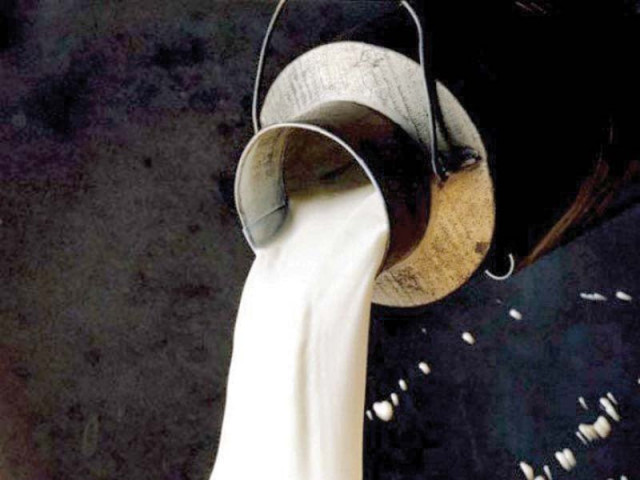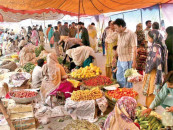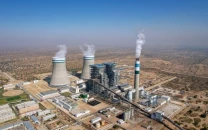Dairy sector urges investment in R&D
Experts say annual milk production of 65 billion litres could be higher

Pakistan’s processed dairy sector is facing challenges in improving supply chain at a time when the livestock and agriculture sector of the country is in deep waters.
According to stake holders, the country was already ranked as ‘low-productive’ when it comes to measuring per-animal yield.
In milk production, however, despite being the third-largest producer of milk, we have an annual production of 65 billion litres
FrieslandCampania Engro Pakistan (FCEP) General Manager Milk Procurement Zeeshanur Rub says, “We have 97 million plus animals and billions of dollars could be earned by developing even one-third of the livestock sector on scientific lines.”
During a visit to the company’s Sahiwal plant, the GM said that, “The average milk yield of a cow is less than 14 litres per day as against the global standards of 30 litres.”
He highlighted that low productivity of milking animals, high input costs, the prevalence of diseases, lack of cold chains, formal marketing system, and credit support to small farmers were all key challenges faced by the dairy sector.
“Cost-effective short and long-term strategies can enable the predominantly informal sector to play its due role in the revival and sustainable growth of the economy,” he said. “Among the existing production, only 3% is processed, 15% makes the losses, 35% is being sold as loose milk and the rest goes to the sweet markets, farmers’ retaining and others,” said Zeeshan.
As per details, the national average of milk production coming from buffalos and cows is 55 million tonnes. The estimated milk potential and maximum breed potential at the research station are 82 million and 110 million tonnes, respectively.
“The Friesian and Sahiwal cows produce 2,000 litres of milk/lactation in 1910. Now, Friesian cow milk production has increased to over 9,000 litres/lactation while the Sahiwal cow milk production is stagnant at 2,000 litres/lactation. The major difference between both is the lack of research and development,” he said.
According to dairy sector experts, countries equipped with advanced research and development are leading milk producers with a fewer number of milking animals but higher yields. Israel and South Korea lead the world with 5% of the GDP research and development expenditures. Pakistan is ranked 97 among 141 countries, reflecting exceptionally low priority being given to research and development.
With the dairy industry processing only 3% of milk production, experts believe that increasing the share to 15-20% can help overcome the prevailing economic crises. Pakistan has great potential to export value-added milk products like cheese, butter and desi ghee.
“Apart from low yield, the sale of loose milk is the main hurdle in the development of the dairy sector,” Zeeshan added.
“The local breed of cows produced even less than half produced by the imported cows,” he lamented. A major reason behind why farmers prefer western breeds.
“There is a dire need to focus on small farmers constituting 97% of the total market. Collaboration of the government and private sectors can bring about a revolution in the lives of over 50 million people directly linked to the dairy sector,” he said. The FCEP GM also believed that the loss of over 0.75 million animals in the recent floods, and the casualties incurred due to the lumpy skin disease, posed a major challenge to the sustainability of the existing milk market.
“The recent floods have washed away standing crops which could lead to fodder scarcity, especially in Sindh,” he added.
Published in The Express Tribune, October 23rd, 2022.
Like Business on Facebook, follow @TribuneBiz on Twitter to stay informed and join in the conversation.



















COMMENTS
Comments are moderated and generally will be posted if they are on-topic and not abusive.
For more information, please see our Comments FAQ